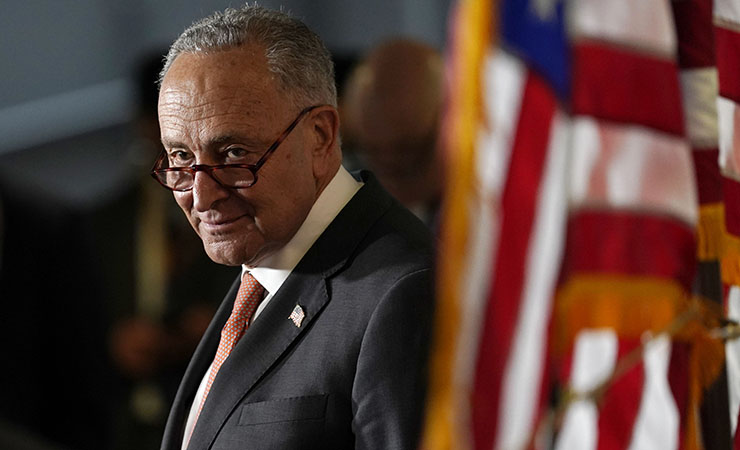US Innovation and Competitiveness Act Passes the Senate

Kelsie Krafton Space Studies Board of the NAS

The US Innovation and Competitiveness Act (USICA) authorizes billions of dollars in funding for the federal science agencies. The Senate passed the bipartisan bill on 8 June by a final vote of 68-32. They must now work with the House to come to an agreement on a final version of the legislation before the president can sign it into law. A brief summary of USICA is below. For a detailed analysis, please see the AIP FYI article.
Support for NSF Diversity, Equity, and Inclusion Efforts
The bill was originally introduced by Senate Majority Leader Charles E. Schumer as the Endless Frontier Act but has grown into the USICA. The original Endless Frontier Act aimed to reduce the geographic concentration of Research and Development (R&D) funding, encourage broader participation of underrepresented populations in science, technology, engineering, and math (STEM), and increase public-private collaboration across the federal agencies.
- Authorizes new investment in STEM education and workforce development, from an annual budget of less than $1 billion in FY 2020 to more than $4 billion per year in FY 2026.
- Creates a Senate-confirmed position within NSF focused on metric-driven approaches to improving the participation of underrepresented populations in STEM.
- Creates a Chief Diversity Officer at NSF (presidential appointee).
- Authorizes funds to address STEM workforce gaps through research experiences for undergraduates (REUs), community college scholarships, apprenticeships, graduate fellowships, and traineeships.
- Dedicates 20% of all NSF funds to states and jurisdictions that participate in the Established Program to Stimulate Competitive Research (EPSCoR).
Other NSF Initiatives
The bill is centered around key technology focus areas: artificial intelligence, advanced computing, robotics and automation, natural disaster prevention or mitigation, biotechnology, and data storage and management. The USICA would create a new Directorate of Technology and Innovation at the NSF to support the key technology focus areas. The new Directorate would be authorized at $29 billion over the next five years. It would also transfer $2.9 billion to existing NSF divisions to support basic research collaboration.
The legislation authorizes an expanded NSF Research Security Office and a new private-sector organization to help universities identify and respond to improper foreign exploitation of federally-funded research.
USICA is intended to help the US better compete with China. On 9 June, China criticized the bill as "full of Cold War mentality and ideological prejudice".
Department of Energy (DOE)
The bill increases funding for DOE research in the key technology areas being done at the National Labs by 29%.
NASA
- Authorizes NASA exploration, aeronautics, and science missions for FY 2021.
- Encourages the development of commercial sector operations in low-Earth orbit.
- Authorize $10 billion to maintain competition and safety in the Human Landing System Program through at least FY 2026.
Department of Commerce (Commerce)
- Authorizes a new $10 billion program to build locally-driven regional technology hubs that attract private sector investment and develop the local workforce.
- Increases the National Institute of Standards and Technology's Manufacturing Extension Partnership from $150 million to $480 million annually.
Table of significant funding increases in billions of dollars:
| Account | Funds added over 5-year period | Notes |
| NSF | $81 | Takes annual budget from $8.5 billion in FY 2020 to $21.3 billion in FY 2026 |
| NSF Research and Development Programs | $52 | Existing NSF activities, representing a 7% increase each year |
| NSF Directorate for Technology and Innovation | $29 | New |
| Department of Commerce | ||
| CHIPS for America Fund | $49.5 | To implement the Commerce Department semiconductor incentive and R&D programs |
| Regional Technology Hubs | $10 | Workforce development activities |
| Defense Advanced Research Projects Agency (DARPA) | $17.5 | To double the budget |
* All values are in billions of dollars.

